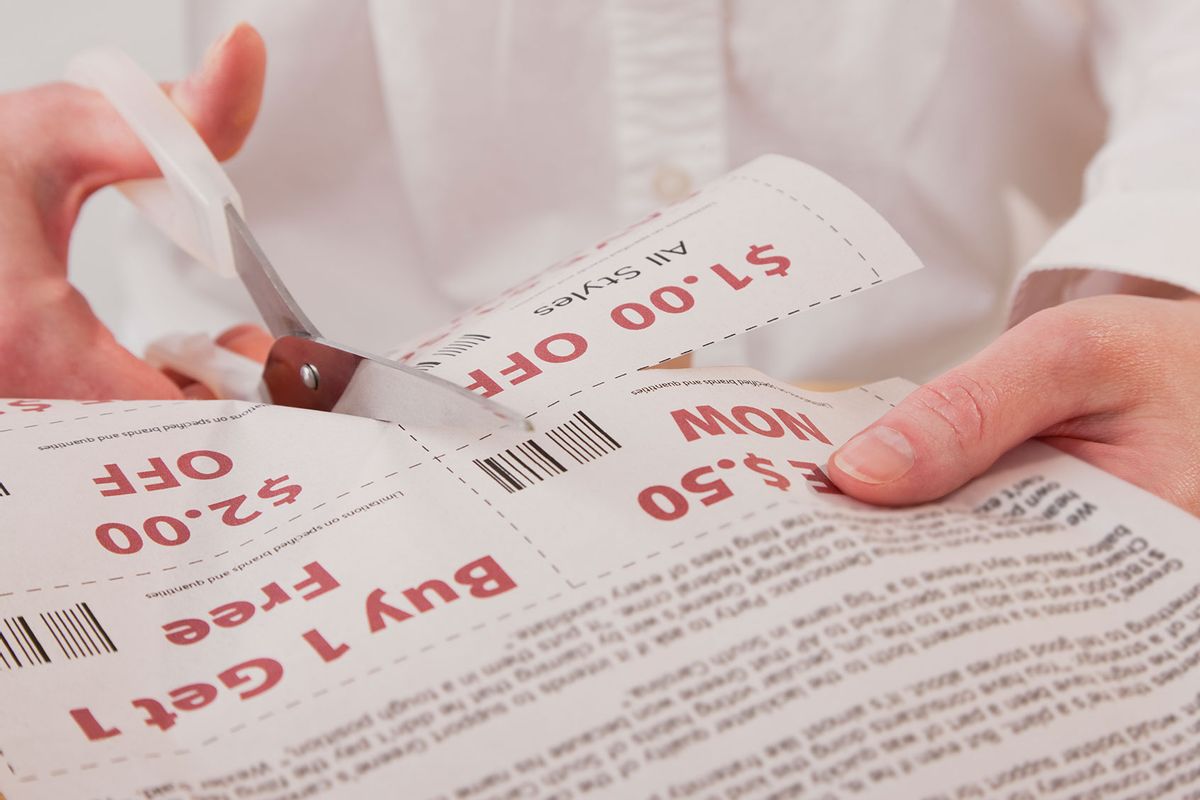About 15 years ago, as the Great Recession was still tightening our wallets, a new type of reality show appeared.
It didn't pit contestants against each other, force them to eat bugs or challenge them to make clothes out of trash; this show highlighted how determined consumers could hack their grocery bills with one mighty weapon: coupons.
“Extreme Couponing” ran on TLC for four seasons, from 2010 to 2012, showing other consumers how to get items for almost nothing. But as we again find ourselves in uncertain economic times, some consumers are starting to wonder: What happened to coupons?
As it turns out, coupons are still around. But the way shoppers find them, and are allowed to use them, has evolved quite a bit.
How couponing has changed
One of the biggest changes seen by influencer, mom and couponer Brittany Kline of Savvy Mama is the actual value of the coupon. It has decreased substantially.
“I’ve noticed that instead of getting a coupon for 50 cents or $1 off one item, now it may be a coupon for 75 cents off three items,” Kline said. “That might not sound like a big deal, but it really adds up — especially if you’re trying to stick to a tight budget. Having to buy more just to save a little with a coupon feels like I’m defeating the purpose.”
Back in the old days, shoppers would find coupons in their Sunday newspaper, and hard core couponers would buy several papers to maximize value. But coupon inserts have decreased as more retailers have switched to digital coupons.
We need your help to stay independent
“It’s disappointing, because those inserts used to be one of the best ways to get coupons,” Kline said.
Sites like Coupons.com allow shoppers to print or clip digital coupons. But "some stores have stopped accepting them because of fraud issues, which is frustrating if you’ve gone through the trouble of finding and printing them,” Kline said.
Another major change: In the past, if a coupon decreased the cost of an item to below zero, you could receive money back. That means you could actually earn money by couponing.
The most you can get now is a free item, but you won’t receive cash back from the store.
“Don’t get me wrong — free is still a win, but those overages used to add up and make a big difference in lowering my grocery bill,” Kline said.
Many retailers still allow shoppers to stack coupons, specifically a store’s coupon or deal and a manufacturer’s coupon.
However, the policy of multiplying coupons — counting one coupon as two or three — has mostly gone away. This was one of the main ways that consumers could save money with coupons, especially if the item was already on sale. Some stores also had special extra discount days for seniors, but those are also largely gone.
Many stores have limited how many identical coupons you can use at one time. For example, you can no longer use more than four identical coupons at Walmart — even if the manufacturer coupon allows for more.
"Free is still a win, but those overages used to add up and make a big difference in lowering my grocery bill"
“In the past, if you had a friendly cashier and a lot of coupons you could really build a stockpile,” said Krazy Coupon Lady senior editor Kristin McGrath. “There are some loopholes that got plugged with digital coupons.”
Another major change: Retailers like Walmart and Kroger no longer let employees override the system if the register rejects the coupon. If the coupon doesn't scan, there's nothing anyone can or will do.
How you can save with coupons now
These days, if you want to score a good deal on an item you need to look for digital coupons. Just like the newspapers that used to contain them, many paper coupons have faded away.
“Digital coupons are more convenient, more accessible — it takes a lot of the guesswork out of it,” McGrath said.
You usually need to have an account with each store to maximize your coupons. Most stores have a rewards program you can join for free. Once you’ve created an account, you can visit the store’s app or website to find their online coupons. You can then digitally “clip” those coupons on your account, and they’ll be there when you check out. This can be handy in case you forget your coupons at home.
"Digital coupons are more convenient, more accessible — it takes a lot of the guesswork out of it"
You can easily sort through digital coupons, seeing which ones are more valuable or are about to expire. If you’re looking for a specific brand or item, you can search for it instead of wading through dozens of printed circulars.
Since couponing became a verb, one of the newest innovations has been stores sending coupons based on previous purchases. This is one of couponing’s greatest technological advances. Unfortunately, these targeted coupons can be harder to come by.
“It’s hard to kind of trigger those offers in a deliberate way, but they are definitely a thing,” McGrath said.
Apps like Ibotta and Fetch have also joined the market. These have their own coupons but may also award you points if you scan your receipt. McGrath recommends scanning your receipts with those apps to maximize your savings.
“What those apps do is that they really embody coupon stacking,” McGrath said. “You can still coupon stack within a retailer, but a lot of the digital coupons will have limits that make stacking difficult.”
Read more
about personal finance



Shares